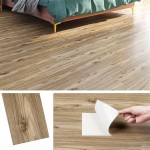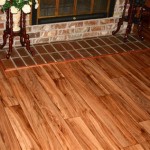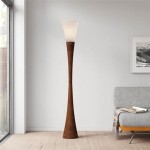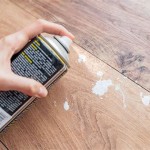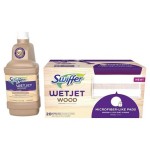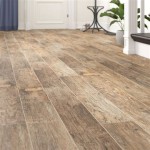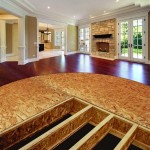Engineered Wood Flooring vs. LVP: A Comparative Analysis
Homeowners embarking on renovation projects often face the dilemma of choosing suitable flooring materials. Engineered wood flooring and luxury vinyl plank (LVP) are two popular choices, each offering a distinct set of advantages and disadvantages. Understanding the key differences between these two options is crucial for making an informed decision that aligns with individual needs and budget constraints.
Construction and Composition
Engineered wood flooring is constructed with a layered design. A top layer of hardwood veneer provides the aesthetic appeal of real wood, while underlying layers of plywood or high-density fiberboard (HDF) offer structural stability. This construction method makes engineered wood more resistant to moisture and temperature fluctuations compared to solid hardwood. LVP, on the other hand, is a synthetic flooring material composed of multiple layers, including a core of polyvinyl chloride (PVC), a printed design layer that mimics the look of wood, and a wear layer for protection against scratches and scuffs.
Durability and Maintenance
LVP is renowned for its exceptional durability and resistance to scratches, dents, and moisture. This makes it an ideal choice for high-traffic areas, kitchens, and bathrooms. The wear layer protects the printed design layer, ensuring long-lasting aesthetics. Cleaning LVP is typically straightforward, requiring only regular sweeping and occasional mopping. Engineered wood, while durable, is less resistant to scratches and moisture compared to LVP. The hardwood veneer can be susceptible to dents and scratches from heavy furniture or pet claws. Regular cleaning and the application of protective finishes are necessary to maintain its appearance and longevity. While engineered wood can tolerate some moisture, it is not fully waterproof like LVP and should not be exposed to standing water.
Cost and Installation
LVP generally offers a more budget-friendly option compared to engineered wood. Material costs are typically lower, and installation can be simpler and less time-consuming, potentially reducing labor costs. Many LVP products feature a click-lock system, allowing for relatively easy DIY installation. Engineered wood flooring can be more expensive, depending on the wood species and thickness of the veneer. Installation can also be more complex, often requiring professional expertise, especially for larger or more intricate installations. Gluing, nailing, or stapling are common installation methods for engineered wood, which can add to the overall project cost.
Appearance and Aesthetics
Engineered wood offers the authentic look and feel of natural wood. The hardwood veneer showcases the unique grain patterns and textures of real wood, adding warmth and character to a space. LVP, while designed to mimic the appearance of wood, can sometimes lack the same visual depth and texture. However, advancements in printing technology have led to significant improvements in the realism of LVP designs, offering a wider range of styles and colors to choose from.
Resale Value
The impact of these flooring options on resale value can vary. While hardwood flooring, including engineered wood, has traditionally been associated with higher resale value, the increasing popularity and quality of LVP have started to shift this perception. High-quality LVP, particularly those with realistic wood-like appearances, can positively influence resale value, especially in areas where moisture resistance and durability are highly valued.
Environmental Considerations
Both engineered wood and LVP have environmental implications to consider. Engineered wood utilizes less hardwood than solid hardwood, making it a relatively more sustainable option. However, the manufacturing process can involve the use of adhesives and other chemicals. LVP is made from synthetic materials derived from petroleum, raising concerns about its environmental impact. However, some LVP products are now being manufactured with recycled content and are designed for recyclability, offering more environmentally friendly options.
Comfort and Sound
Engineered wood flooring generally offers a warmer and softer feel underfoot compared to LVP. The wood layers provide some insulation and can absorb sound better than the harder surface of LVP. LVP can feel harder and colder underfoot, and it may not offer the same level of sound insulation. However, underlayment options can be used with LVP to enhance comfort and reduce noise transmission.

Engineered Hardwood Vs Lvp Wood Or Vinyl Flooring Reallyfloors America S Est

Hardwood Vs Engineered Lvp Floors Side By Comparison

Hardwood Vs Engineered Lvp Which Is Better

Lvp Vs Engineered Hardwood Find Your Perfect Floor

Engineered Wood Vs Vinyl Plank A No Nonsense Comparison And Beyond Blog

Luxury Vinyl Plank Flooring Vs Engineered Hardwood Next Day Floors

Lvp Vs Hardwood Flooring Comparison Guide
Solid Versus Engineered Floors Ken Spears Construction

Hardwood Floors Vs Laminate Luxury Vinyl Plank Lvp Which Should I Use And What Are Ers Wanting

Wood Plastic Composite Lvt Vs Engineered Oak Jfj Flooring
